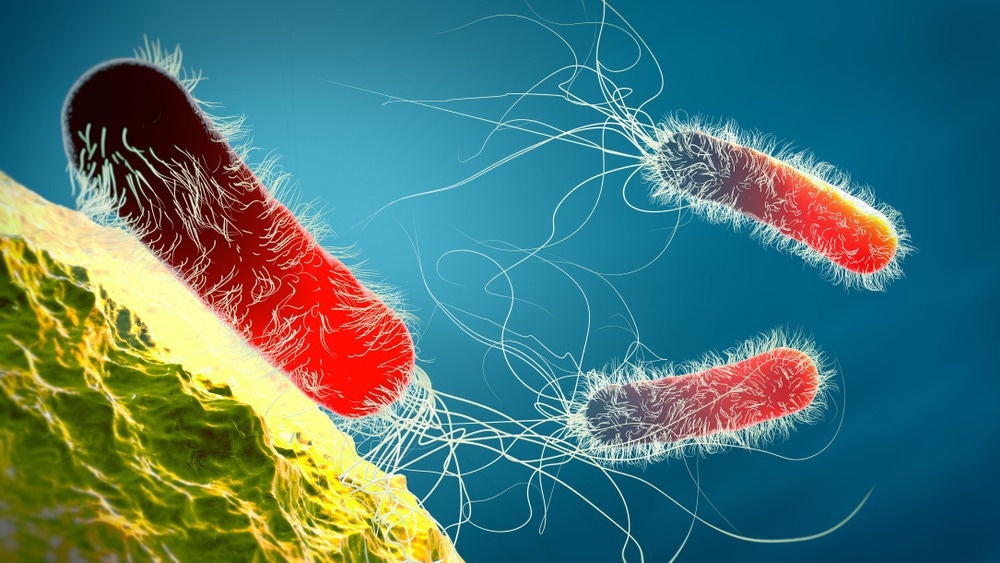Infection with multidrug-resistant (MDR) organisms, such as Klebsiella pneumoniae, Pseudomonas aeruginosa, Enterococcus faecium, Escherichia coli (ESKAPEE pathogens), Staphylococcus aureus, Enterobacter spp., and Acinetobacter baumannii, is a significant public health threat to the global population. However, at present, no drugs are available that can effectively resist MDR organisms.

Study: Engineered peptide PLG0206 overcomes limitations of a challenging antimicrobial drug class. Image Credit: Christoph Burgstedt / Shutterstock.com
Background
Almost forty years have passed since the discovery of carbapenems. Yet, despite the efficacy of these antibiotics, there remains an urgent need for new and effective antimicrobial agents that can effectively combat antibiotic-resistant microorganisms.
Naturally occurring antimicrobial peptides (AMP) have exhibited intrinsic defense mechanisms against numerous species. The scarcity in the clinical development of AMPs has been attributed to their toxicity, limited in vivo activity, lack of systemic activity, and suboptimal pharmacokinetic (PK) properties.
A recent PLoS ONE study reports the development of a synthetic antibacterial peptide (PLG0206), previously known as WLBU2. The newly designed PLG0206 is an amino acid peptide consisting of valine, arginine, and tryptophan residues, ensuring maximum bacterial membrane binding and interaction and minimum toxicity. Prior research has indicated that PLG0206 is effective against a broad spectrum of pathogens, including the most potent S. aureus biofilm and P. aeruginosa.
About the study
The current study hypothesized that PLG0206 could be effective against infections caused by MDR bacteria. All preclinical evaluations of PLG0206, as well as the related in vitro and in vivo assessments, were also included in the current study. This evidence supported the claim that this antimicrobial compound was an active antibacterial agent, which could overcome limitations associated with the available commercial and experimental antibiotics.
Most traditional antibiotics lose their efficacy against bacterial biofilms compared to planktonic cells. Considering this limitation, the present study utilized a sizeable clinical isolate library of ESKAPEE pathogens to determine if PLG0206 possessed rapid, broad-spectrum, bactericidal activity against both Gram positive and Gram negative MDR pathogens in both biofilm and planktonic growth states.
The primary advantage of PLG0206 is the rational design that enables it to overcome many shortfalls associated with traditional antibiotics and AMPs, including a lack of anti-biofilm activity and pathogenic resistance.
Study findings
In vivo experiments using various animal models revealed that PLG0206 was effective against MDR infection. For example, a large animal model of periprosthetic joint infections (PJI) demonstrated the effectiveness of PLG0206 in reducing biofilm-based S. aureus infection. Similar results were obtained in a murine model of uropathogenic E. coli urinary tract infection (TUI) treated with PLG0206.
Animal model-based experiments also indicated a low toxic profile for systemic and local use of PLG0206. A large rabbit PJI animal model study confirmed the ability of PLG0206 to maintain biofilm-associated activity with no apparent toxicity. Notably, all animals exhibited prolonged survival after a single treatment with PLG0206 after S. aureus infection.
A murine model revealed systematic administration of PLG0206 could more effectively reduce bacterial loads in both bladders and kidneys as compared to the antibiotic control. In addition, PLG0206 was found to be safe and well tolerated in humans who received the agent intravenously (IV). This clinical study revealed linear PK properties with a median terminal half-life that ranged between 6.5 and 11.2 hours when administered as single IV doses ranging from 0.05 to 1 mg/kg.
Compared to Gram-positive bacteria, Gram-negative bacteria are more likely to develop antibiotic resistance. In spontaneous mutation frequency (SMF) studies, elevated PLG0206 MIC values indicated that Gram-positive pathogens did not produce spontaneous mutants; however, this was not the case with P. aeruginosa.
An optimal concentration of PLG0206 was found to reduce P. aeruginosa colonies effectively, thus inhibiting the development of spontaneous mutants. Unfortunately, available antimicrobial chemotherapeutic agents are not able to eliminate persistent biofilms. Currently, scientists are exploring the mechanism associated with PLG0206 resistance against P. aeruginosa.
Conclusions
PLG0206 was found to possess broad-spectrum and rapid bactericidal activity against ESKAPEE MDR microbes. Furthermore, this bactericidal agent was found to be effective against both biofilm and planktonic growth forms. In vitro and in vivo assessment of PLG0206 supported its clinical development and underscored the importance of peptides as therapeutic agents.
- Huang, D. B., Brothers, K. M., Mandell, J. B., et al. (2022) Engineered peptide PLG0206 overcomes limitations of a challenging antimicrobial drug class. PLoS ONE 17(9); e0274815. doi:10.1371/journal.pone.0274815
Posted in: Medical Science News | Medical Research News | Disease/Infection News | Pharmaceutical News
Tags: Acinetobacter, Acinetobacter Baumannii, Amino Acid, Animal Model, Antibiotic, Antibiotic Resistance, Antimicrobial Drug, Arginine, Bacteria, Biofilms, Compound, Drugs, Efficacy, Enterococcus, Frequency, in vitro, in vivo, Membrane, Mutation, Peptides, Preclinical, Public Health, Research, Staphylococcus aureus, Tryptophan, Urinary Tract Infection, Valine

Written by
Dr. Priyom Bose
Priyom holds a Ph.D. in Plant Biology and Biotechnology from the University of Madras, India. She is an active researcher and an experienced science writer. Priyom has also co-authored several original research articles that have been published in reputed peer-reviewed journals. She is also an avid reader and an amateur photographer.
Source: Read Full Article